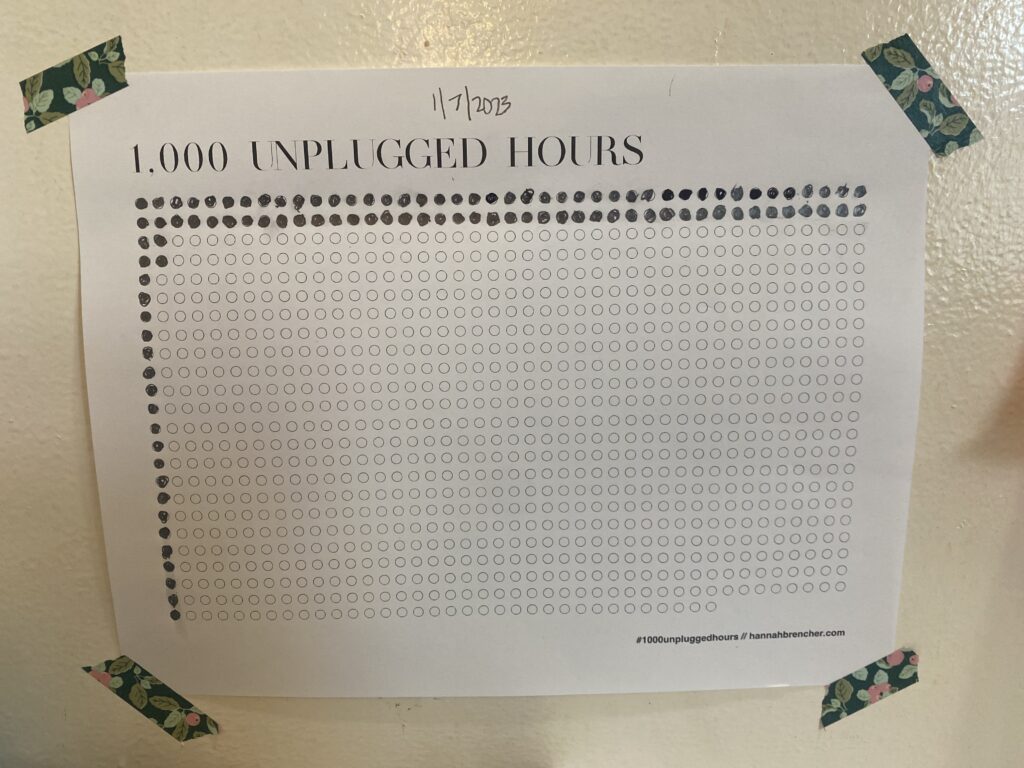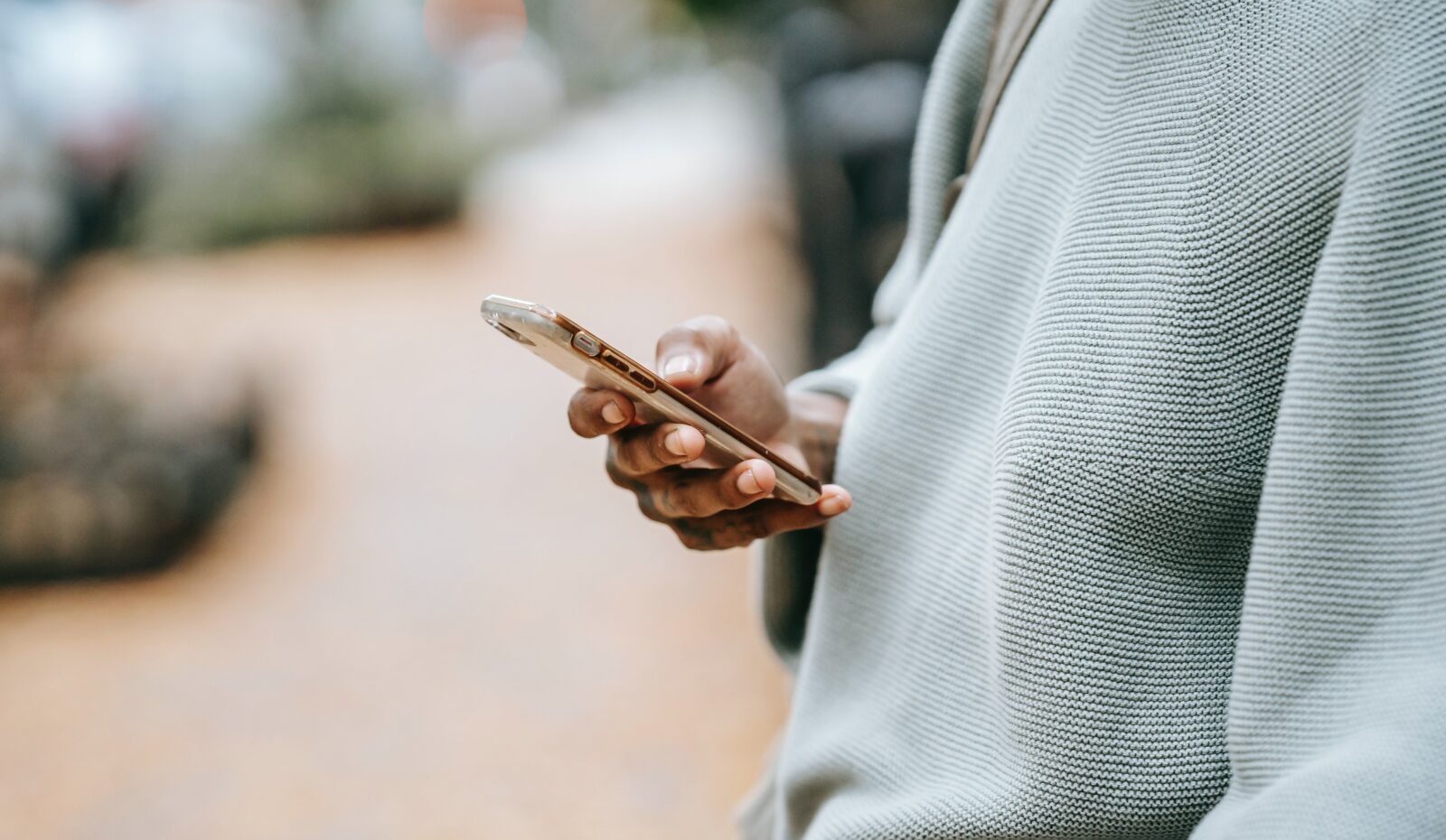Last fall, I took my first month-long break from Instagram. In the past, I had deleted the app for a weekend here or there and the occasional week-long break (sometimes intentionally, other times it just happened). But I knew I wanted to challenge myself to a longer break.
That month, I expected my phone usage to go down without the pull of likes, comments, and shares. But at the end of each week, my weekly phone report told a different story. I was disappointed in myself. Even though I didn’t have my favorite app to check, I found other apps to fill the space. Goodreads! Pinterest! Email! Substack! Anything to get that hit.
And it’s not just in my head that I can’t put my phone down.
In Cal Newport’s book, “Digital Minimalism,” he references Tristan Harris, a former start-up founder and Google engineer who is now speaking out against the dangers of phone use. “This thing is a slot machine. Every time I check my phone, I’m playing the slot machine to see ‘What did I get?’ There’s a whole playbook of techniques that get used [by technology companies] to get you using the product for as long as possible.”
This past December, days before Christmas, I found myself in a spiral—obsessively checking app after app on a loop. I don’t even know why. Maybe it was the stress of the upcoming holiday. It’s uncomfortable to admit, but it felt like I couldn’t stop. And I’ve noticed that the more I use my phone—the more I want to keep using my phone. Which I suppose isn’t surprising, given that phones were designed to suck us in.
How I Broke The Cycle Of Phone Addiction
I planned to delete Instagram again in January—a fresh start to a new year. But because of how I felt, I deleted the app and signed out of my account on my computer days after Christmas.
I knew I wanted to be more intentional with my phone use during this month off social media. I didn’t want to passively scroll my phone during January, as I did last fall. So, I made a plan in the final week of 2022, and this is what’s working for me (so far) in 2023.
Plan Unplugged Time
Last spring, I read a blog post by writer Hannah Brencher, challenging herself to “1,000 Unplugged Hours in One Year.” I printed off her bubble sheet (you can get one for yourself in the link!) and half-heartedly decided to try it. After a month, I only had a handful of bubbles filled in. I knew I wouldn’t make 1,000 hours in a year, so I tore the sheet off the wall and threw it in the trash.
At the beginning of January, I printed off a new bubble sheet and wrote the date on the top, January 7th. So what’s the difference this time? I knew I had to be intentional with taking time off my phone—it wouldn’t just happen because I printed off the bubble sheet.
Right now, my goal is three to four hours unplugged each day. On the weekends, I try for longer stretches.
Make A List Of Times I Could Be Off My Phone
A few years ago, I bought the Hatch Restore alarm clock, swapping out my phone as my alarm clock. For over a year, I’ve been in the habit of turning my phone off every evening. And my new habit is not turning it back on until after my big kids have left for school the following day, shortly after 6:30 a.m.
Mid-morning, I shut my phone off after I check my email, scroll Facebook on my computer, and respond to texts I received the evening before. It might seem silly, but what works for me is to set the kitchen timer for one hour, then I turn my phone off, not turning my phone back on until the timer goes off.
Sometimes I do another hour unplugged while my toddler naps. (Other days, I spend that time scrolling my phone and eating candy. I’m all about balance.) Usually, I get another hour or two unplugged in the late afternoon/evening. I’ve been working to be unplugged during the time my kids are coming home from school (even if it’s not a full hour). Some afternoons, I turn my phone off at 4:30 when they get home from school and leave it off until the following day. Other times, I’ll turn it back on after they go to bed.

Make A List Of Things To Do While Unplugged
Most days, I’m home with a (very busy) toddler while my two oldest kids are at school. Often my time spent unplugged is cooking, cleaning, laundry, playing with my toddler, and just my everyday life—albeit unplugged. But, occasionally, I want to spend the hour doing something other than chores. When I started turning my phone off, I sometimes didn’t know what to do with myself. So, I wrote down what I wanted to do with this time. Some items on my list:
- Organize my photos and create photo albums
- Declutter (pick one space in the house and clean it out!)
- Read
- Take a walk outside
- Tend to my chickens—water & food, clean their coop, and check for eggs
- Write/journal
- Paint my nails (which usually turns into painting my toddler’s nails)
- Workout
Turn My Phone Off
For me to completely resist taking a peek at my phone, I turn it off and put it in a kitchen drawer. Of course, everyone’s situation is different—we have a landline (hello, rural life!). If there was a true emergency (school, family), I could be reached on our house phone, and my close friends and family all have my husband’s number too.
And friends, nothing is more humbling than turning my phone back after an hour or two unplugged to zero texts, voicemails, or emails.
On the other hand, it’s exciting to turn my phone back on to several texts and emails. Messages that were allowed to accumulate since I wasn’t checking my phone every few minutes.
Because these are arbitrary rules I’ve given myself, it will look different for everyone. Once I turn my phone off, I’m not allowing myself to open my laptop and then scroll Facebook or check my email during this hour. If I need to use my computer during my unplugged time (for writing), I open a document in a new window, so I don’t have easy access to my email, Facebook, or Slack (which I can easily be distracted by).
Now that I’ve been practicing unplugging for a few weeks, I notice when I start to reach for my phone over and over—like an itch, I can’t scratch. When I feel that happening, if it works with my schedule, I shut my phone off, even if it wasn’t a time I planned to be unplugged. And even if it’s not for a full hour.
Like my phone, I need to power off and reboot every once in a while too.
Clean Up My Phone And How I Use It
At the end of December, I analyzed what apps I could get rid of on my phone to resist the temptation to use it. For this season in my life, that’s Facebook and Instagram.
I have an iPhone and utilize the downtime and app limits feature. Although admittedly, in the past, I’ve been notorious for overriding the limits. Assuming I do go back to Instagram soon, an option for me might be to have my husband set the limit passcode so that I cannot override it. (Also, if you have a healthy relationship with Instagram, please send me all your tips and tricks.)
Lastly, I check the time tracker on my phone a few times daily. I have a daily goal, and if I’m already halfway to my goal by mid-morning, it’s a reminder I need to put my phone down.
Know My Why
The first time I tried to unplug, I “failed” because I didn’t have the heart to really do it. I just thought I should. And even though that was the truth, I needed more than that—I needed a plan.
The nudge to try again came after several months of seeing myself in a spiral on social media (caught in the comparison trap, etc.) and having my son say to me, “Mom, you’re always on your phone!” (My kids, serving up slices of humble pie since 2014.) Granted, I know this isn’t entirely true—my son’s sense of “always” and “never” is a little off. (Like, how he says, “Mom, you never let me watch TV!” Which is not true.) But his words were convicting nonetheless.
In a few years, my kids will be getting their own phones. Although we are still years away from that, I keep thinking, What can I do today to set a good example for them tomorrow? Of course, this doesn’t mean they never see me use my phone. I want them to see me texting friends, making phone calls, and FaceTiming family, but I don’t want it to be the only thing they see me doing.
As a geriatric millennial, I grew up without a cell phone. I got my first phone when I was 18 and headed to college. But that isn’t a reality for my kids; it will be part of their childhood—it already is. But I know I can be a better example to them in how I use my phone, preparing them for when they have their own phones.
More Ways I’m Successfully Spending Time Away From My Phone
I leave a notepad on the kitchen counter to jot down things that come up while I’m unplugged. Make the kids’ dentist appointments. Add milk to the grocery order. Book Airbnb for our spring vacation. Google: Who was the actor in that one movie I watched recently on Netflix? Buy Valentine’s cards and candy for school. This way, I’m not tempted to turn my phone on “just for a minute,” but also, I can clear some of my mental load without using it as an excuse to plug back in.
Fiction books will always be my first love, but I sprinkle in non-fiction every once in a while. If you want to read about reducing screen time and the effects of screens while not on your phone—there are plenty of books to choose from. In January, I read “Digital Minimalism” by Cal Newport, which I referenced earlier. While I don’t plan to go as far as Newport (he does not use social media), his book was eye-opening and gave me even more motivation to reduce my screen time. In addition to the effects of screen usage, he writes about the benefits of leisure activities and spending time alone (and all the moms said, “Yes, please!”).
Finally, I leave my phone at home when I can. Since we live over an hour from town, I likely won’t leave my phone at home when I go grocery shopping. But, when I visit my in-laws, who live three miles from my house, I occasionally leave my phone at home. My next challenge is leaving my phone at home on a future date night. Since my husband will have his phone, we will be able to check in with the grandparents that way.
I find filling in the bubble sheet oddly satisfying. It reminds me of the Friends episode where they “trick” Monica into cooking Thanksgiving dinner because it’s “a competition with herself!” And as Monica said, “That’s my favorite kind!” Filling in a bubble sheet might not work for you, but find something else to motivate you to unplug.
Getting rid of my phone entirely isn’t likely to happen, but part of what I’m learning is to be intentional with the time I am on my phone. Scrolling my phone or using social media isn’t all bad; it’s just learning how to use it to serve me best.
I’m encouraged that my screen time average is down over 50% from what it was at the end of 2022. But the stats on my phone and the bubble sheet aren’t the only proof I’m putting my phone down. In January, I read nine books, and I made my 2021 family photo album (which I “didn’t” have time for in all of 2022).
I know I’ll have setbacks, and I’ve already had days I’ve gone over my daily goal. And the year is still new, so I can’t say what will still work for me in a few months. But I hope I’m creating habits for the long run—not just a New Year’s resolution that will fade out by March.
What could you do with a few more hours in your life?




LOVE LOVE LOVE this! Thank you for the detail and insights. Appreciate all the tips. Planning to put some of this into practice in my world soon.
Thanks for reading! I was worried I gave too much detail… as I tend to do sometimes. 😉 Hope some of the tips work for you!
Do you have a house phone?? I want to turn my phone off at night but I’m always worried if there was an emergency from a family member or someone needed to get a hold of me. I do not have a house phone.
Hi Jamie! Yes, we do have a house phone! Partly due to how rural we are (we have zero cell service), and until a few years ago, we couldn’t text or call at home (until Wifi calling was enabled!!), so a house phone was a must! Also, I haven’t converted my husband to turning his phone off at night, so someone could get ahold of us on his phone too.